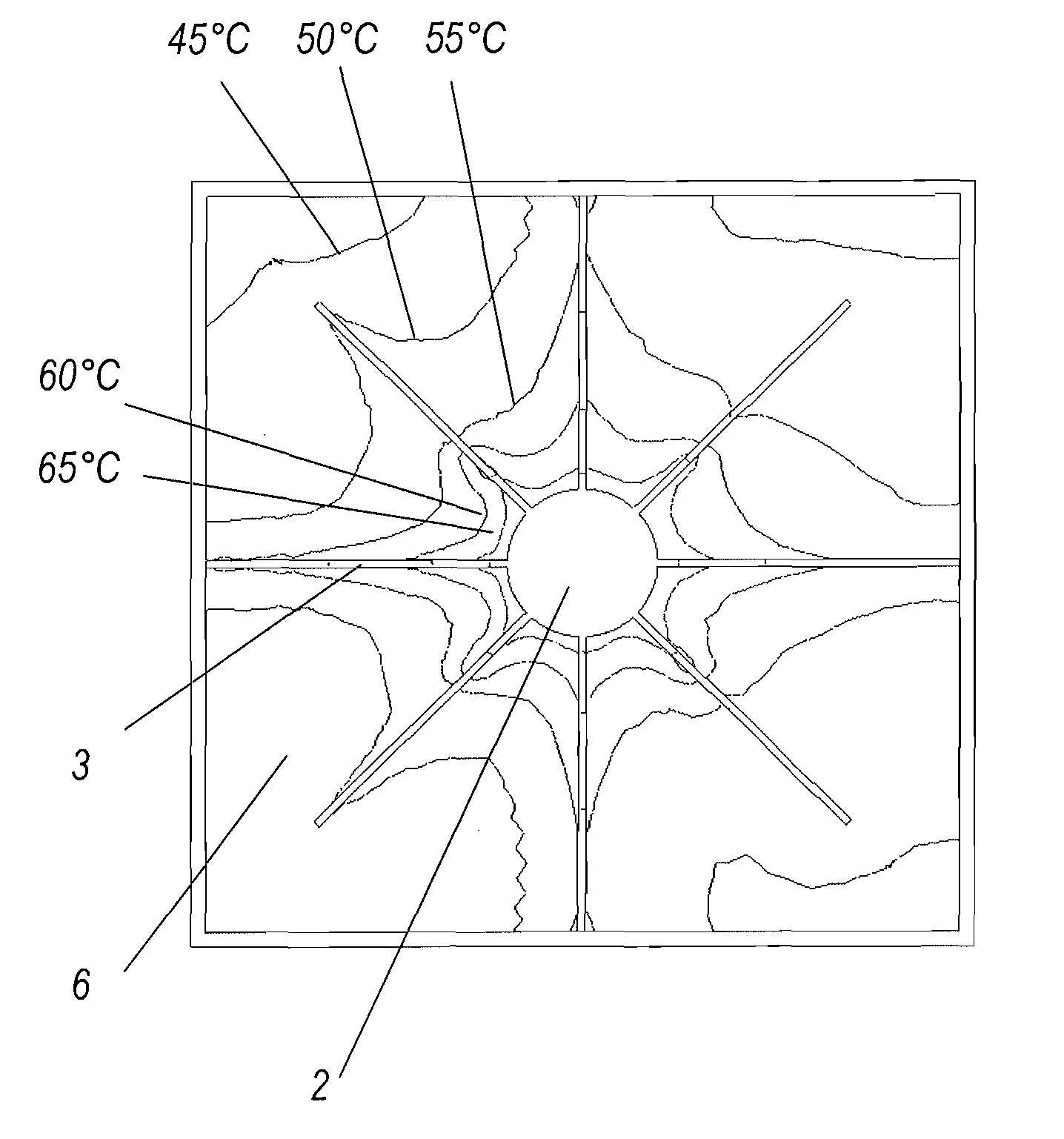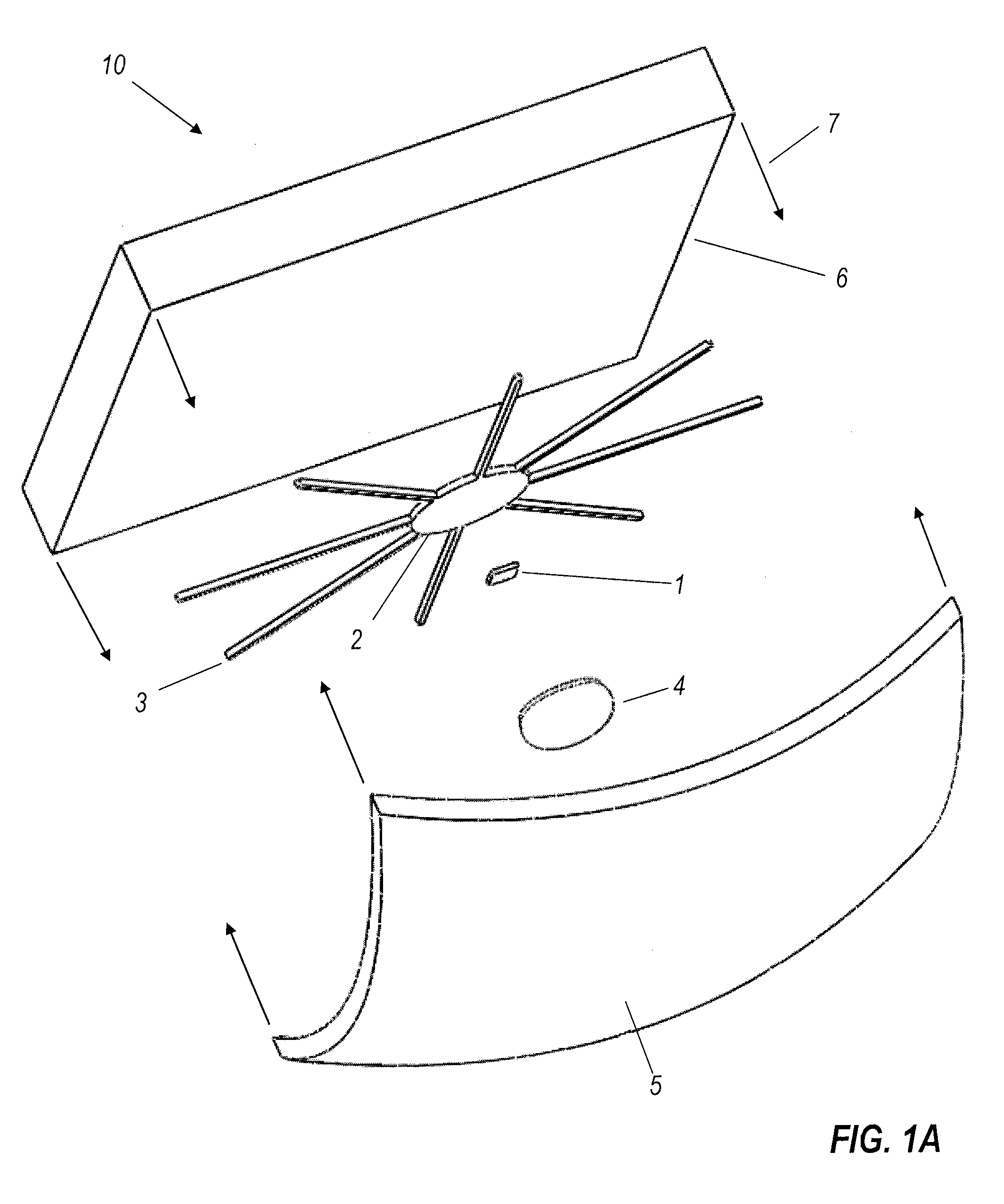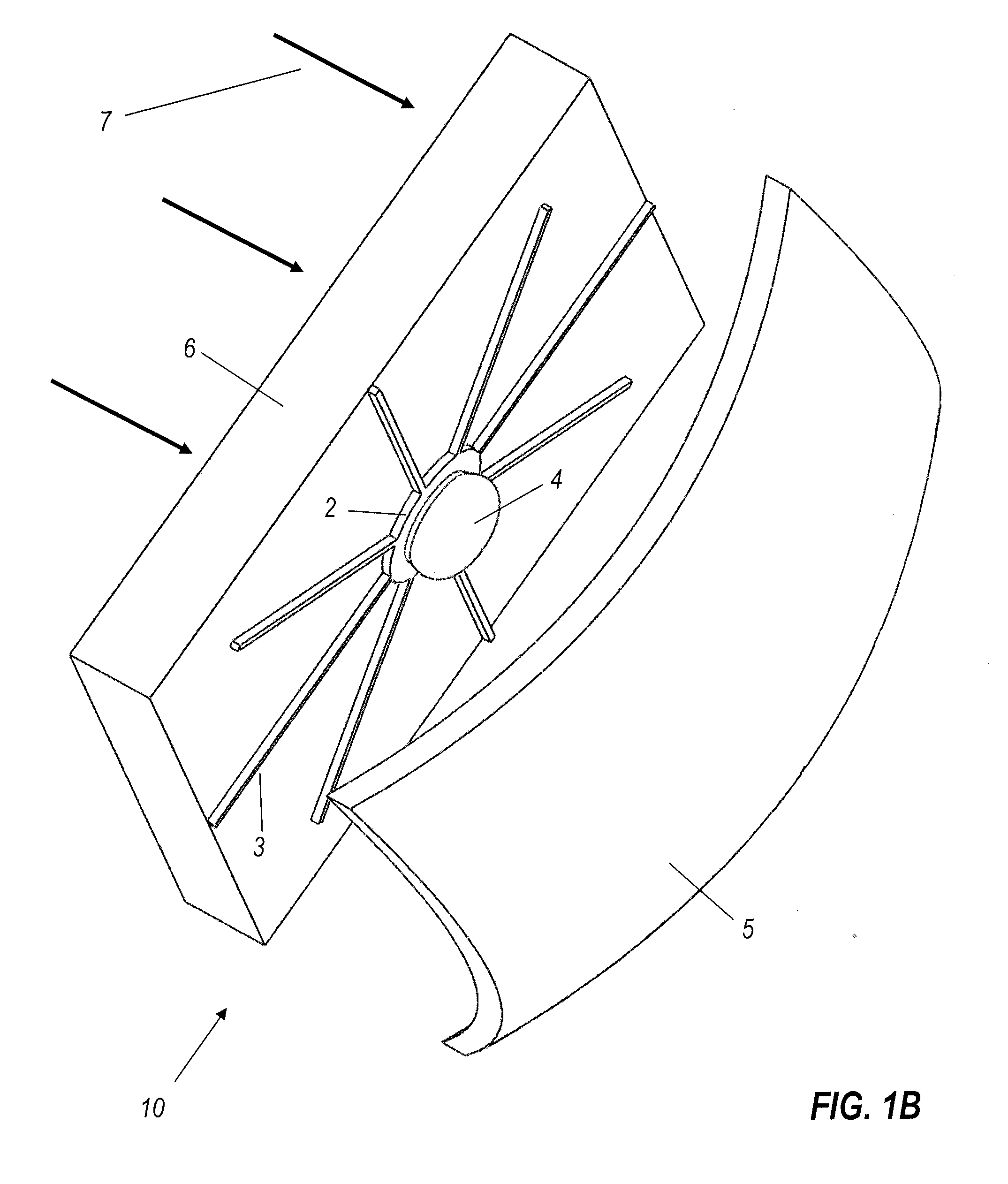On-window solar-cell heat-spreader
a solar cell and window heat-spreader technology, applied in the field of light concentration and illumination, can solve the problems of structural vulnerability, unbalanced appearance, and difficult heat removal of the rear location, and achieve the effect of easy cleaning and easy isolation from humidity
- Summary
- Abstract
- Description
- Claims
- Application Information
AI Technical Summary
Benefits of technology
Problems solved by technology
Method used
Image
Examples
Embodiment Construction
[0051]A better understanding of various features and advantages of the present invention will be obtained by reference to the following detailed description of embodiments the invention and accompanying drawings, which set forth illustrative embodiments that utilize particular principles of the invention.
[0052]Referring initially to FIGS. 1A through 1D (collectively FIG. 1), FIG. 1A is an exploded view, and FIG. 1B an assembled view, of a first embodiment of a solar concentrator 10, comprising photovoltaic (PV) chip 1 mounted on a base 2, spreader bars or strips 3 radially extending from base 2, and secondary lens 4 covering PV chip 1. Base 2, with spreader bars 3, PV chip 1, and secondary lens 4, is mounted on the inside of cover glass 6, which is faced by primary reflector 5. In an example, primary reflector 5 is 50 mm on a side, and secondary lens 4 is 10 mm in diameter. Primary reflector 5 receives incoming direct solar rays 7 through cover glass 6, and concentrates the rays upo...
PUM
 Login to View More
Login to View More Abstract
Description
Claims
Application Information
 Login to View More
Login to View More - R&D
- Intellectual Property
- Life Sciences
- Materials
- Tech Scout
- Unparalleled Data Quality
- Higher Quality Content
- 60% Fewer Hallucinations
Browse by: Latest US Patents, China's latest patents, Technical Efficacy Thesaurus, Application Domain, Technology Topic, Popular Technical Reports.
© 2025 PatSnap. All rights reserved.Legal|Privacy policy|Modern Slavery Act Transparency Statement|Sitemap|About US| Contact US: help@patsnap.com



